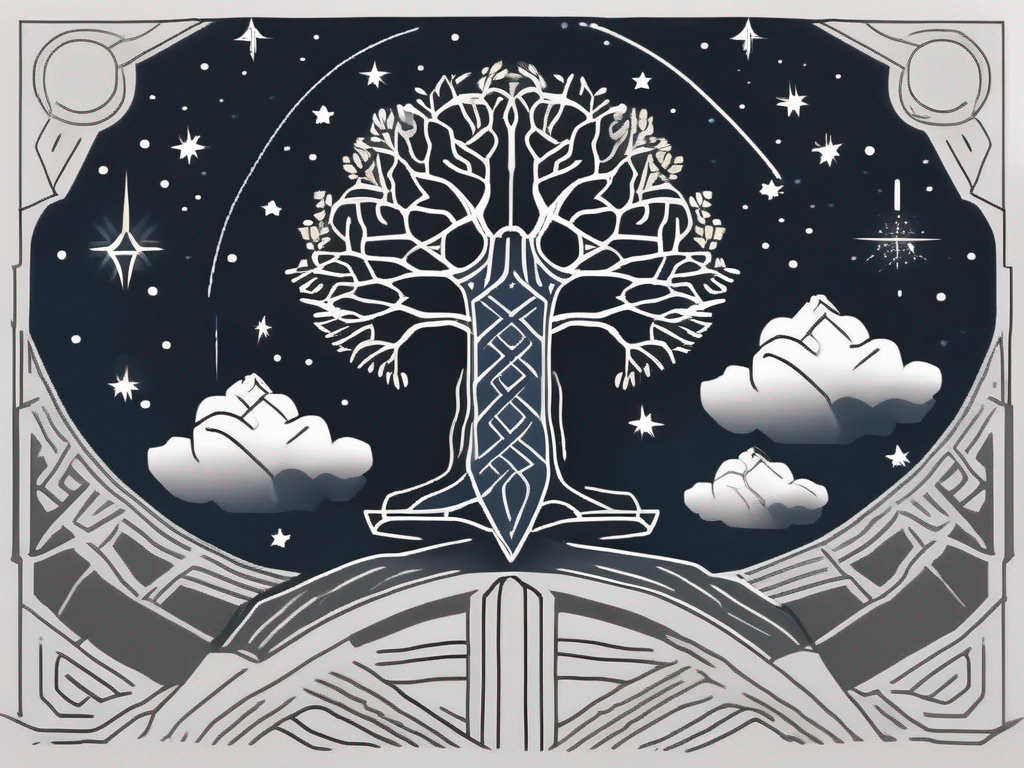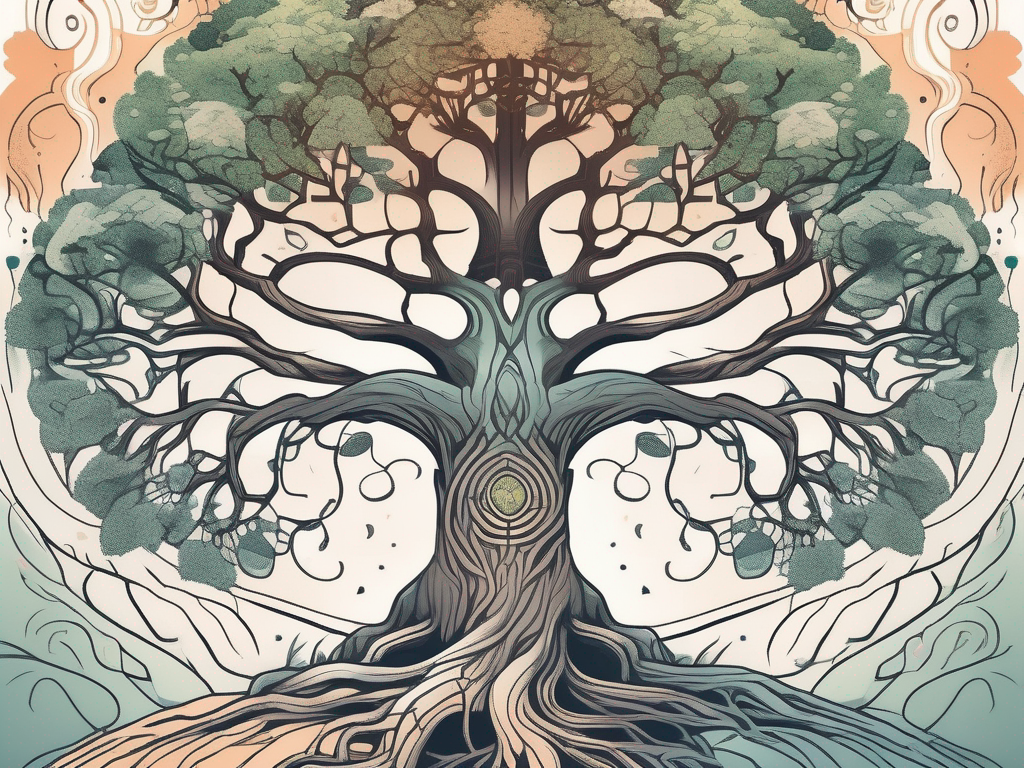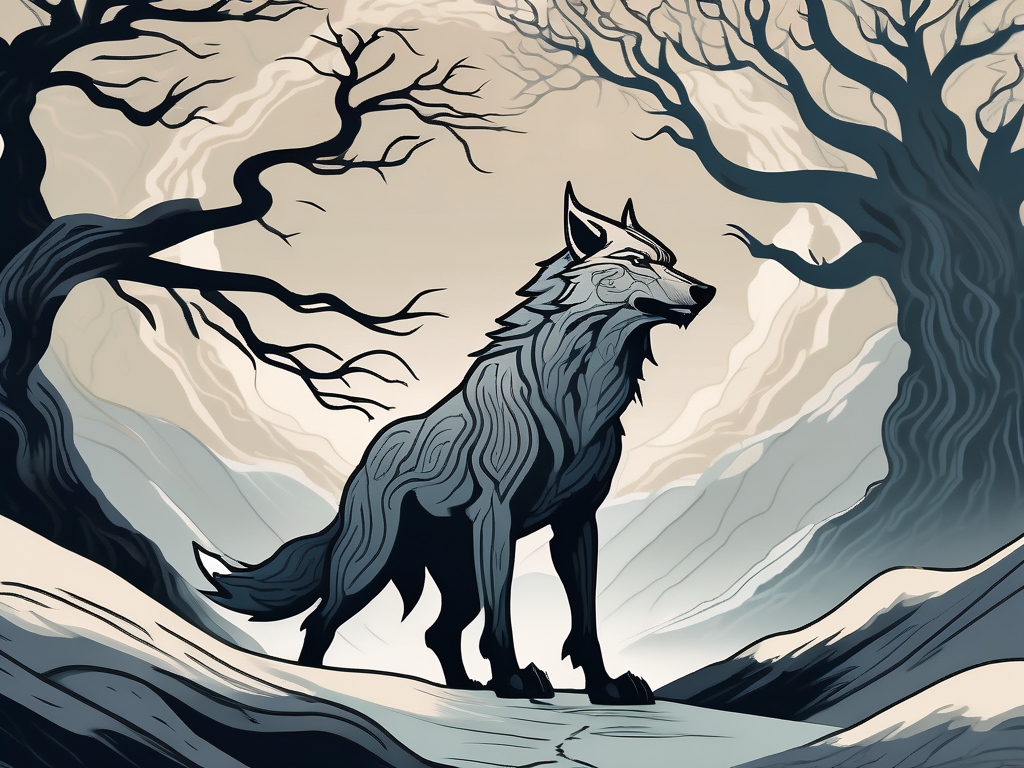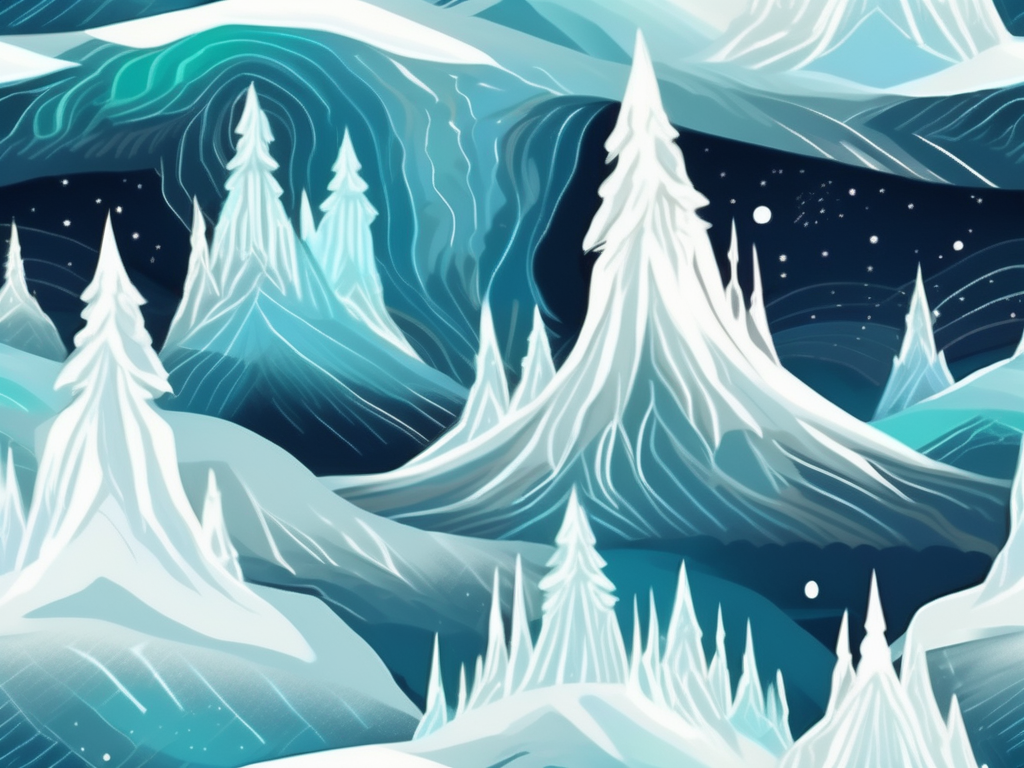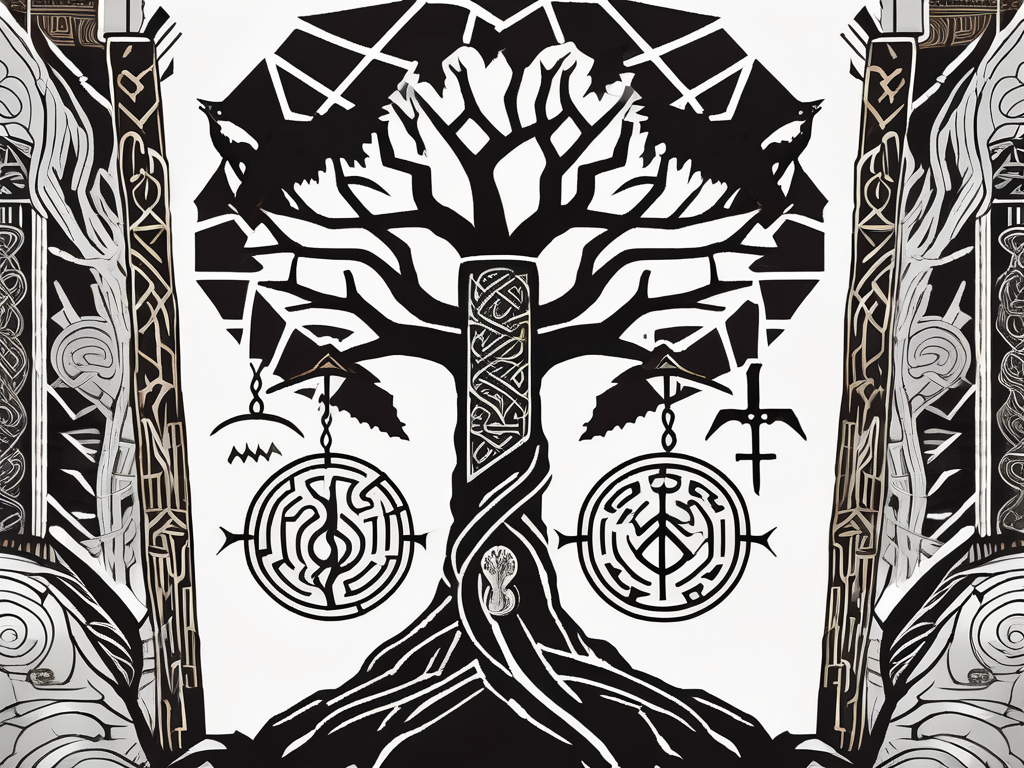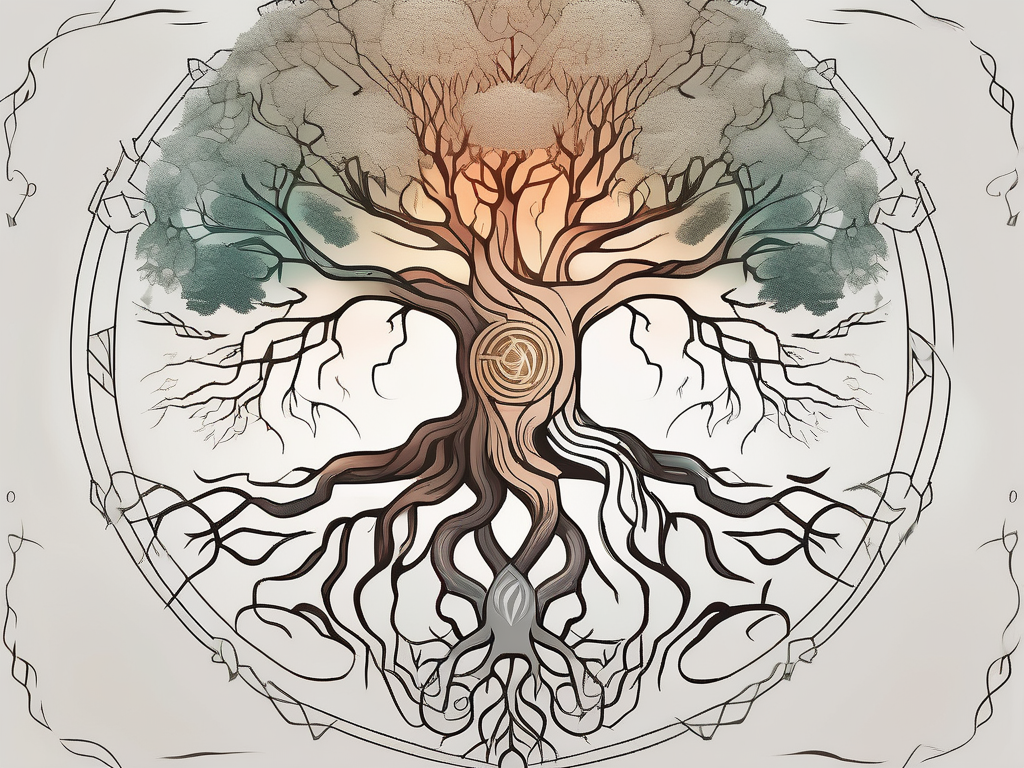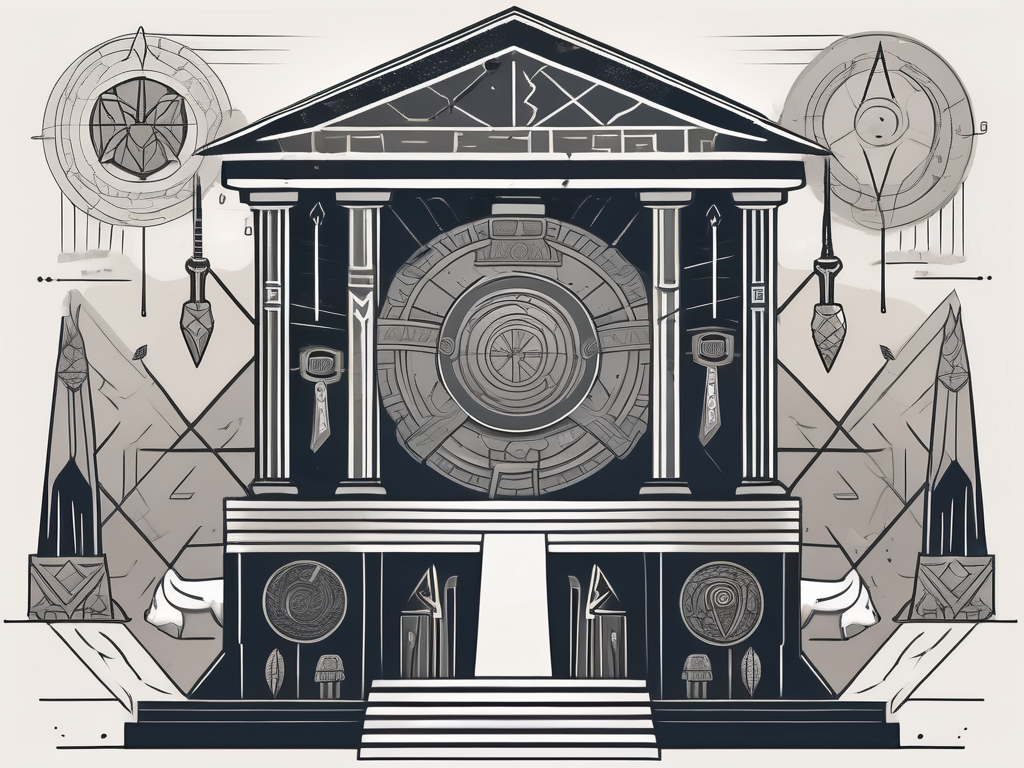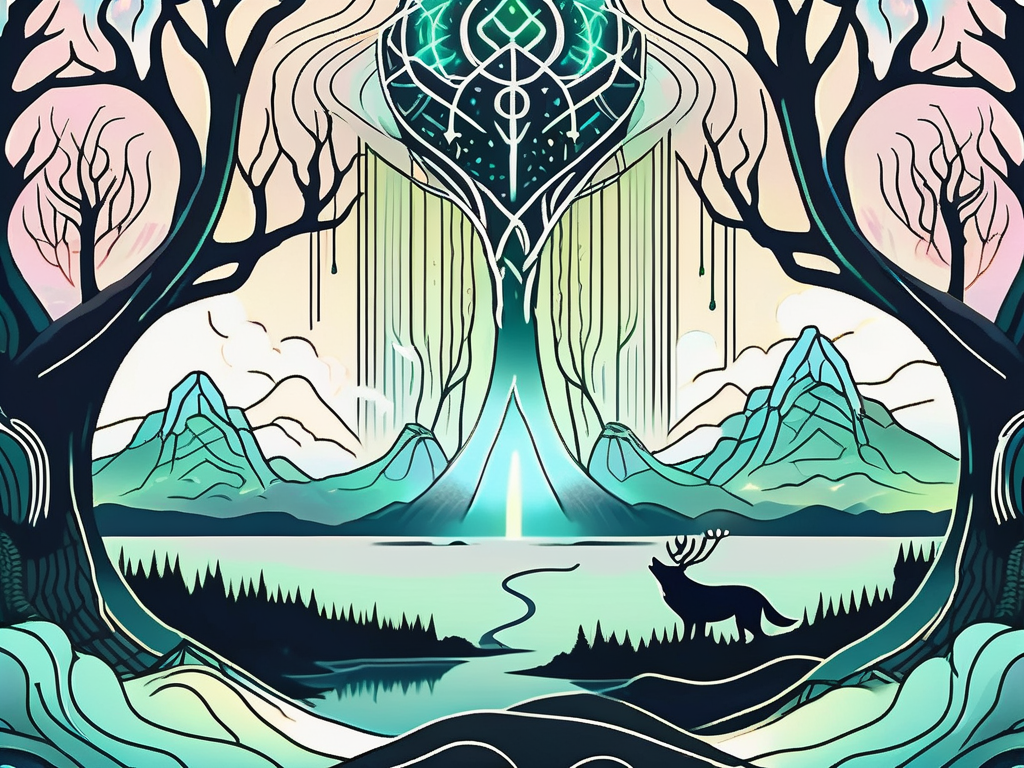Norse mythology is filled with a rich and diverse cast of characters, from fearsome gods to cunning tricksters and mighty giants. In this comprehensive guide, we will delve into the fascinating world of the Norse pantheon and explore the stories and legends that have captivated generations. So grab your horned helmet and prepare to journey into the realm of gods and monsters!
Understanding Norse Mythology
The Origins of Norse Mythology
The roots of Norse mythology can be traced back to ancient Germanic and Scandinavian tribes who believed in a pantheon of powerful gods and goddesses. These myths and legends were passed down orally through generations, until they were finally recorded in written form during the Viking Age.
One of the most intriguing aspects of Norse mythology is its rich and complex cosmology. According to the ancient Norse beliefs, the universe consisted of nine realms interconnected by the mighty World Tree, Yggdrasil. Each realm was inhabited by different beings, including gods, giants, elves, and dwarves. This intricate web of realms and beings created a diverse and vibrant mythological tapestry.
What sets Norse mythology apart from other mythologies is its emphasis on the impending doom of Ragnarok, the final battle that will see the destruction of the gods and the world as we know it. This apocalyptic worldview adds a sense of urgency and intrigue to the tales, as the gods and mortals strive to delay the inevitable.
One of the most fascinating characters in Norse mythology is Loki, the trickster god. Loki’s mischievous nature often leads to chaos and conflict among the gods, making him both a beloved and feared figure in the pantheon. His complex relationships with the other gods and his role in triggering Ragnarok make him a central figure in many Norse myths.
The Importance of Norse Mythology in Viking Society
Norse mythology played a vital role in the lives of the Vikings, shaping their beliefs, values, and social structure. The gods were not distant figures to be worshipped from afar, but rather living beings who actively intervened in mortal affairs. The Vikings believed that by emulating these gods and embodying their virtues, they could ensure favor and protection.
The myths also served as cautionary tales, teaching important lessons about honor, bravery, and the consequences of actions. Stories of heroic battles and epic quests inspired the Vikings to seek glory and conquest, while tales of betrayal and trickery warned against treachery and deceit.
One of the most revered gods in Norse mythology is Odin, the Allfather. Odin was not only the ruler of Asgard, the realm of the gods, but also the god of wisdom, poetry, and war. He was known for his relentless pursuit of knowledge, sacrificing his eye in exchange for a sip from the Well of Wisdom. Odin’s wisdom and strategic prowess made him a revered figure among the Vikings, who sought his guidance in times of war and decision-making.
Another important deity in Norse mythology is Thor, the god of thunder and protector of mankind. Known for his immense strength and fierce loyalty, Thor was often depicted wielding his mighty hammer, Mjolnir, which could summon lightning and crush his enemies. The Vikings believed that by invoking Thor’s name and wearing his symbol, the hammer, they could gain his protection and strength in battle.
The gods and goddesses of Norse mythology were not infallible beings, but rather complex characters with their own flaws and weaknesses. This human-like nature of the gods made them relatable to the Vikings, who saw in them both the potential for greatness and the capacity for failure. It is through these myths and legends that the Vikings sought to understand the world around them and find meaning in their own lives.
The Major Norse Gods
Odin: The Allfather
Odin, the wise and powerful Allfather, reigns at the top of the Norse pantheon. He is the god of war, wisdom, and poetry, and is known for his insatiable thirst for knowledge. Odin sacrificed one of his eyes to gain the wisdom of the cosmos, and he is often depicted with a long, gray beard and a wide-brimmed hat. His ravens, Huginn and Muninn, bring him news from all corners of the world.
As the ruler of Valhalla, the great hall where fallen warriors are taken after death, Odin commands an army of brave warriors known as the Einherjar. He is also the father of Thor, the god of thunder, and is known for his relentless pursuit of power and knowledge.
Thor: The God of Thunder
Thor, the brawny and boisterous god of thunder, is renowned for his mighty hammer, Mjolnir, which he uses to protect gods and mortals alike from the forces of chaos. With his flowing red hair and bushy beard, Thor is a formidable warrior and the constant champion of order and justice.
Despite his fearsome appearance, Thor has a kind and jovial spirit, and is often depicted in myths wrestling giants and outwitting his foes. His thunderous laughter echoes through the skies, and his strength is unmatched among the gods.
Loki: The Trickster God
No pantheon is complete without a trickster, and in Norse mythology, that role is filled by Loki. Mischievous and unpredictable, Loki is both loved and feared by the gods. His ever-changing appearance and cunning wit make him a master of deception, and his actions often have unforeseen consequences.
Loki is responsible for many of the gods’ greatest challenges and adventures, but his trickery sometimes leads to disaster. He is best known for his role in the death of Baldr, the god of light and purity, which ultimately sets in motion the events of Ragnarok.
The Lesser Known Norse Gods
Freya: The Goddess of Love and War
Freya, the beautiful and fierce goddess of love and war, holds a prominent role in Norse mythology. She rides a chariot pulled by two massive cats and possesses a cloak of falcon feathers, which allows her to transform into a bird. Freya is associated with fertility, desire, and the pursuit of knowledge.
Despite her gentle demeanor, Freya is a formidable warrior and has a deep fondness for fine jewelry and valuable gems. Her tears are said to become amber when they fall into the earth, and her love affairs are the stuff of legend.
Baldr: The God of Light and Purity
Baldr, the god of light and purity, is beloved by all for his beauty and kindness. His golden hair and radiant smile bring joy to the hearts of gods and mortals alike. Baldr’s tragic death at the hands of Loki casts a shadow of sorrow over the pantheon, and his absence is keenly felt.
Before his death, Baldr was known for his prophetic dreams, which provided valuable insight into the future. He is often associated with rebirth and renewal, and his story serves as a reminder of the fragility of life.
The Structure of the Norse Pantheon
The Aesir: The Gods of the Sky
The Aesir, a group of powerful gods and goddesses, are associated with the sky and its elements. They are led by Odin and include mighty beings such as Thor and Freya. The Aesir represent law and order, and their divine realm is known as Asgard, a glorious palace accessible only to those deemed worthy.
Within the Aesir, various gods hold specific roles and domains, such as Forseti as the god of justice and Vidar as the god of vengeance. Together, they embody the collective strength and wisdom of the sky realm.
The Vanir: The Gods of the Earth
In addition to the Aesir, the Norse pantheon also includes the Vanir, a group of gods associated with fertility, nature, and the earth. The Vanir are known for their close connection to the natural world and their ability to shape and manipulate the forces of creation.
Goddesses such as Freya and Njord reign over the bounty of the earth, while gods like Freyr and Ullr oversee the harvest and hunting. The Vanir represent the vibrant and life-sustaining aspects of the Norse cosmos, balancing the might of the Aesir with their nurturing energy.
Norse Mythological Creatures
Giants: The Enemies of the Gods
In Norse mythology, giants are towering beings who challenge the gods and threaten the stability of the cosmos. Often depicted as brutish and colossal, the giants embody chaos and disorder. They wage war against the gods and are responsible for many of the obstacles and trials that the pantheon must overcome.
Yet, not all giants are inherently evil. Some, like Skadi and Utgard-Loki, possess wisdom and strength that can be harnessed for noble purposes. Despite their differences, giants and gods share a complex relationship intertwined by destiny and conflict.
Dwarfs: The Craftsmen of the Gods
The dwarfs are skilled craftsmen and miners who play a crucial role in Norse mythology. They forge powerful weapons and artifacts for the gods, such as Thor’s hammer, and are renowned for their craftsmanship and knowledge of the earth’s treasures. Dwarfs are often depicted as small and stout, with long beards and hammers in hand.
While they are loyal supporters of the gods, the dwarfs also possess a mischievous streak, which can lead to both great achievements and calamitous consequences. Their interactions with the gods often result in adventures and lessons learned.
And so, the pantheon of Norse gods stands as a testament to the imagination and creativity of ancient Nordic cultures. Within their tales lies a world of heroes and villains, love and betrayal, and the eternal struggle between order and chaos. Through this comprehensive guide, we hope to inspire a deeper appreciation for the Norse pantheon and the enduring legacy of their mythology.
